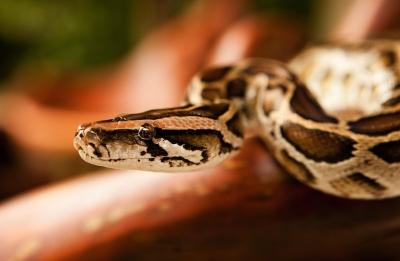
Pythons are nonvenomous snakes found in Asia, Africa and Australia. Because they are not native to North or South America, they are considered Old World snakes. The word python can refer to both the family Pythonidae or the genus Python, found within Pythonidae.
There are 41 species of python found within the family Pythonidae, according to the Reptile Database. Though both pythons and boas are large constrictors, they are separate families.
The family Pythonidae contains some of the largest snakes snakes in the world, according to Sara Viernum, Wisconsin-based founder of The Wandering Herpetologist. “Most pythons are large snakes … such as the reticulated python (Python reticulatus), which can grow over 30 feet [9 meters] in length,” she said. “There are also small species of pythons such as the anthill python (Antaresia perthensis), which only grows up to 24 inches [61 centimeters] in length and is considered the smallest python species in the world.”
The coloration and size of different species of python vary widely. Depending on their local habitats and need for camouflage, coloring can range from elaborately patterned scales (such as those on the Burmese python, the ball python and many other species) to solid brown (leiopythons) to bright green (the green tree python), but scientists note some more subtle physical commonalities.
Within Asia, Africa, Oceania and Australia, pythons stay in relatively warm, wet climates. Many species thrive in rain forests, though pythons also live in grasslands, woodlands, swamps, rocky outcrops, dunes and shrubs, according to the San Diego Zoo. Pythons shelter in hollows, under rocks, in abandoned mammal burrows and tree branches, depending on the species. As humans have developed python habitats, pythons have become accustomed to sheltering in urban debris and farms.
Though native to the Old World, one species of python has made its home in the Western Hemisphere. “The Burmese python is an invasive species that has been discovered living and successfully breeding in the Florida Everglades,” Viernum said. The climate of the Everglades allows it to live much as it would in a Southeast Asian swamp.
Credit : Live Science
Picture Credit : Google




